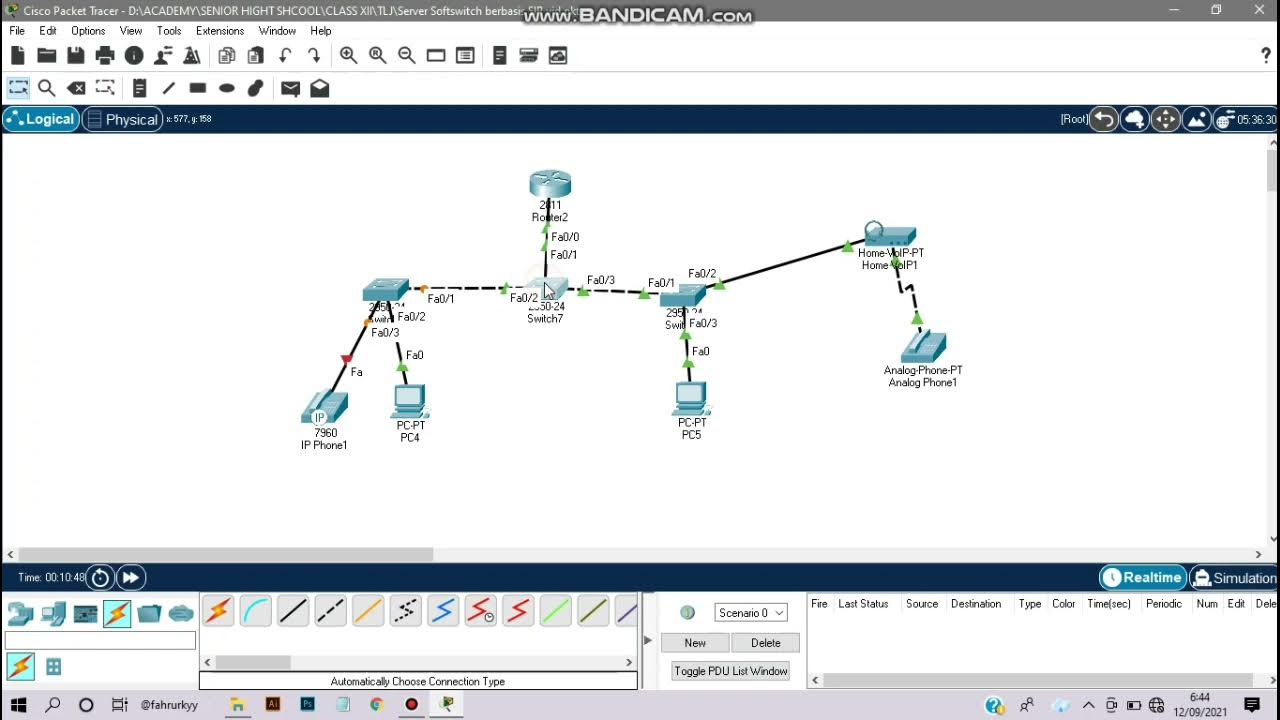Switch-Onto-Fault (SOTF) Scheme Basics | Example Using the SEL-411L Protective Relay
Summary
TLDRThis video tutorial provides an in-depth guide on configuring the SEL-411L protective relay for a switch on default scheme. It covers the crucial steps to set the switch's duration and establish a fault trip equation using sensitive overcurrent elements. The speaker explains the importance of immediate tripping in fault scenarios and clarifies the programming of trip logic, including how it interfaces with relay orbits to control breaker operations. The tutorial encourages viewers to explore further online courses on power system protection, ensuring a comprehensive understanding of key concepts in power engineering.
Takeaways
- 😀 The SEL-411L protective relay is configured for switch on default schemes to enhance protection in power systems.
- 🔧 Default duration for the switch is set to 10 cycles, dictating how long the switch remains active after closing the breaker.
- ⚡ The system is designed to trip instantaneously upon detecting a fault, ensuring rapid response.
- 🛡️ Trip logic includes various functions, such as regular trip equations for protection elements and communications-assisted trip options.
- 🔄 The 'switch into fault' trip equation is configured to be very sensitive and instantaneous, focusing on non-directional overcurrent elements.
- 🌐 Zone 2 elements for both phase and ground are utilized without the need for coordination with remote end protection when the remote breaker is open.
- 📡 Configured trip equations are internally fed into the trip relay, which physically operates the breaker.
- 📚 The speaker promotes online courses for deeper learning in power system protection and control, covering various topics.
- 👍 Viewers are encouraged to like and subscribe for more informative content related to power engineering.
- 🔍 The video emphasizes the importance of understanding protective relay logic and its application in real-world power systems.
Q & A
What is the main purpose of configuring the SEL-411L protective relay?
-The main purpose is to establish protective settings and trip logic for a switch on default scheme, ensuring immediate fault response and protection for electrical systems.
What are the key parameters to set for a switch on default scheme?
-Key parameters include the switch duration (defaulted to 10 cycles) and configuring the trip logic for fault conditions.
What type of trip elements are used in the trip equation for the switch on default scheme?
-The trip equation utilizes a sensitive, instantaneous non-directional overcurrent element, specifically the 50p1 element for both phase and ground.
How does the trip logic respond to faults in the switch on default scheme?
-The trip logic is designed to respond instantaneously to faults, allowing for immediate disconnection of the affected circuit to prevent damage.
What does the presence of 't' at the end of the trip equation elements signify?
-'t' indicates that these elements are time-delayed versions of the trip equations, used for coordination with other protective devices.
Why is coordination with remote end protection not necessary in this configuration?
-Coordination with remote end protection is unnecessary because the remote end breaker is assumed to be open, isolating the circuit.
What is the role of the trip relay output contacts?
-The trip relay output contacts are programmed to execute the physical trip command of the breaker in response to fault conditions.
What additional topics are covered in the online courses mentioned?
-The online courses cover topics like bus differential protection, transformer differential protection, and protective relay logic, providing more in-depth knowledge.
What is the intended audience for the video content?
-The video is intended for professionals and students interested in power engineering and power system protection control.
How can viewers engage with the content beyond watching the video?
-Viewers are encouraged to like the video and subscribe to the channel for more informative content on power engineering topics.
Outlines

This section is available to paid users only. Please upgrade to access this part.
Upgrade NowMindmap

This section is available to paid users only. Please upgrade to access this part.
Upgrade NowKeywords

This section is available to paid users only. Please upgrade to access this part.
Upgrade NowHighlights

This section is available to paid users only. Please upgrade to access this part.
Upgrade NowTranscripts

This section is available to paid users only. Please upgrade to access this part.
Upgrade NowBrowse More Related Video

Cara Instalasi Server Softswitch Berbasis SIP di Cisco Packet Tracer

#14 Startup Code Part-2: Replacing the vector-table, embedded software build process

Network #10: STP: Spanning Tree Protocol

PD Lec 53 CTS Constraints | Spec File | Clock Tree Synthesis | VLSI | Physical Design

Simulasi VoIP Server softswitch pbx - Cisco Packet Tracer

Journals | Odoo Accounting
5.0 / 5 (0 votes)